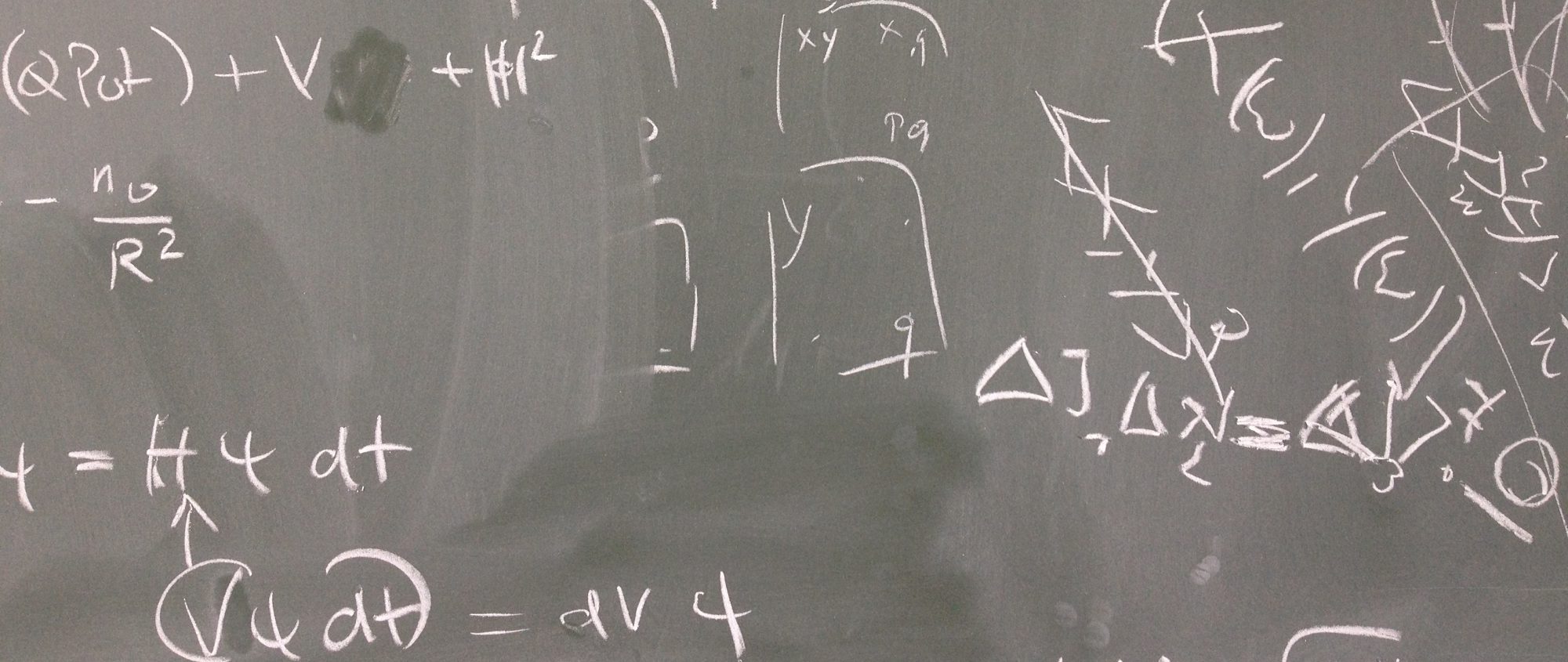Hermann Weyl (“Quantenmechanik und Gruppentheorie”, 1927) and Eugene P. Wigner (“Gruppentheorie und ihre Anwendung auf die Quantenmechanik der Atomspektren”, 1931) initiated a fruitful marriage between the mathematics of symmetry transformations (also known as group theory) and quantum mechanics. This language or viewpoint provides simple and powerful rules to “quantise” a system or to uncover regularities in the “zoo“ of quantum states or spectra.
Sometimes, the symmetry approach does not go very deep in physics undergraduate teaching, perhaps because physicists fear to overwhelm their students with abstract mathematics. The fully equipped particle physicists cannot live without group theory, however. So there are those who know most of the tricks, and there are others facing miraculous symbols with open mouths. The mathematics department fully embraces the group language, of course, but there is the risk of leaving a public of physicists behind formal developments, when no care is given to physical pictures, intuition or applications. But intuition, geometry, and beauty are one of the key aspects of symmetry transformations, as also mathematicians will probably confess. In chemistry, group theory plays a prominent role in spectroscopy, for molecules or crystals. Here, concrete recipes and formulas are employed with great dexterity, although one may sometimes ask for a somewhat more rigorous approach.
This topic has seen a surprising renaissance in the last few years, with a number of books published. Here is a non-exhaustive list.
- Andreas Wipf, Symmetrien in der Physik: Gruppen- und Darstellungstheorie mit Anwendungen (Springer 2023)
- Mike Guidry and Yang Sun, Symmetry, Broken Symmetry, and Topology in Modern Physics: A First Course (Cambridge University Press 2022)
- Robert Kolenkow (emeritus Carleton College), An introduction to groups and their matrices for science students (Cambridge University Press 2022)
- Jakob Schwichtenberg, Durch Symmetrie die moderne Physik verstehen: Ein neuer Zugang zu den fundamentalen Theorien (Springer Spektrum 2017); english: Physics from Symmetry
- Stefan Scherer, Symmetrien und Gruppen in der Teilchenphysik (Springer Spektrum 2016)
- Nadir Jeevanjee, An Introduction to Tensors and Group Theory for Physicists (Springer/Birkhäuser 2015)
- Franck Laloë, Symétries continues (EDP Sciences 2024), deutsch: Grundlagen kontinuierlicher Symmetrien: von der Raumzeit zur Quantenmechanik (Wiley VCH 2024); english: Introduction to Continuous Symmetries: from Space-Time to Quantum Mechanics (Wiley 2023)
Why so many different titles? What motivations?
In this and subsequent posts, we try to collect a few statements and give some glimpses into these pages. A little case study will be devoted to the question: “How to introduce the relativistic theory of the electron?” (Among experts known as the Dirac equation.) Here are a few papers that may be added to the list above, with a focus on this specific topic and illustrating the diversity of things one may find.
- How (not) to teach Lorentz covariance of the Dirac equation, Hrvoje Nikolić, Eur. J. Phys. (2014)
- Biquaternion based construction of the Weyl- and Dirac matrices and their Lorentz transformation operators, E. P. J. de Haas (2020)
- Derivation of the Dirac equation from basic principles, H. Martin Haft (2018)
- Classical Mechanics, Herbert Goldstein, John L. Safko, and Charles P. Poole Jr. (Pearson 2014), chapter 13
- An introduction to spinors, Andrew M. Steane (2013) arxiv:1312.3824
Some authors want to write down how they have learned about symmetries (J. Schwichtenberg). Others want to prepare students for high-energy physics and quantum field theory in any number of dimensions. (A. Wipf, N. Jevanjee), or for applications of topology in condensed matter (M. Guidry and Y. Sun). Often books arise from lectures, for example about rotational symmetry and its exploits in atomic physics (F. Laloë).
A teacher in an “advanced” topic like this will typically convey what she or he has learned and is using in her/his daily research work. The corresponding “level of sophistication” will be mirrored in the text. A somewhat ambitious teacher may want to present her/his personal view on the subject. One may find texts that essentially collect the information lying around (in textbooks, on wikipedia or in online lecture notes). These texts are useful to have everything in the same place, but may lack a guiding line. Texts that I still remember had a particular style and way of presentation (Landau & Lifshitz volume I is a wonderful example). Some books are special because they string together different aspects of the subject into one coherent flow, making connections that may be difficult to find elsewhere.
How do they differ?
… to be continued, using the example of the Dirac equation.

